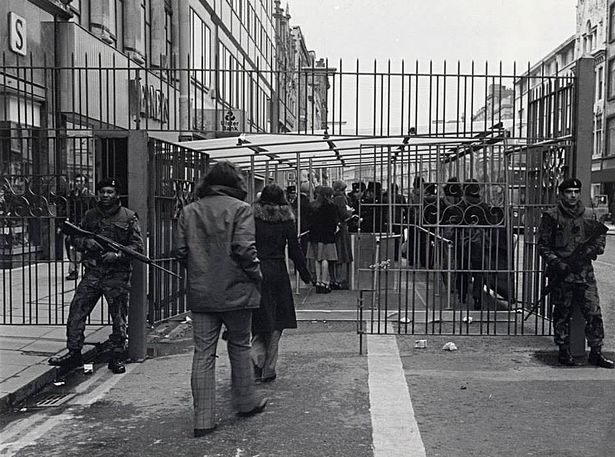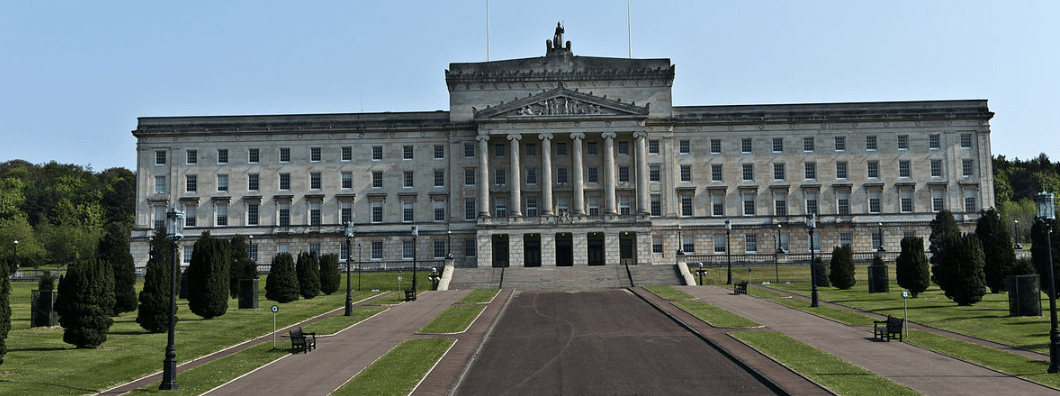This week marks the twenty-fifth anniversary of the signing of the Good Friday Agreement. It is important that socialists draw up a sober balance sheet of what has been achieved in those years, and what has not.
There is no doubt that at the time it was signed, the agreement was welcomed by most of the population of the North, for the simple reason that it broke the cycle of violence that had plagued them for nearly thirty years. It was a welcome relief to be able to go shopping without having bags searched, having to show ID at armed military check-points and just to walk along a street without fearing a car bomb.
That the Agreement was welcomed was shown by the 71% vote in favour in the referendum that was held in the North. But in the sizeable minority vote against – there was under 6% against in the Republic – we see that there were clear concerns among sections of the population, chiefly the Protestant community. Those doubts may yet emerge in a more serious fashion, fanned by unionist parties who howled with fake indignation at the minor role given to the Irish Republic in the Good Friday arrangements, and later at the Brexit deal.
The island of Ireland has become more integrated economically
From a political point of view, the Agreement was a vindication of the view long put forward by Marxists that the so-called ‘military campaign’ of the Provisional IRA was never going to succeed. The Protestant community, which always felt itself to be the real targets of IRA bombings – whatever the Provos said – would never be bombed into a united Ireland. That still remains true today, despite the desperate longings of the dissidents around the New IRA, who hope for a return to ‘armed struggle’.

Ironically, in the years since the GFA, the North and South of Ireland have become more integrated economically and socially than ever before. In any one year, millions of people cross this open border, unhampered by police or customs posts.
But because it is the UK’s only land border with the European Union, it has presented an almost intractable problem for the pro-Brexit British government, Northern Ireland as a whole having voted Remain. On the one hand, the big majority (in both North and South) are happy to keep the border open. But on the other, the UK government has been so determined to leave the EU single market and EU ‘regulations’ that an open Irish border can only be maintained by some form of ‘border’, with minor checks on goods, down the Irish Sea, between Northern Ireland and Britain. Such is the Northern Ireland Protocol, now recently amended as the Windsor Agreement.
It is because of the minor role accorded in the GFA to the Republic, that the Democratic Unionist Party has always opposed the Good Friday Agreement. But since Brexit and the Irish Sea ‘trade border’, the DUP has found its real raison d’etre and it sees any check on goods trade as a potential ‘break’ between NI and the rest of the UK.

It has become, therefore, the party that says ‘no’ to everything, playing to its exclusively unionist support base and fanning the flames of sectarianism for all it is worth. The DUP’s refusal to agree to the old, and now the new, trade protocols effectively blocks the Northern Ireland Assembly and helps to keep the sectarian pot boiling.
Economic prospects for the working class not improved at all
What the FGA also did, unfortunately, was have sectarianism ‘baked’ into it. Parties and members of the new Assembly (MLAs) are ‘designated’ as either ‘nationalist’ or ‘unionists’ and crucial legislation, for example, budgetary measures, have to have ‘cross-community’ (ie nationalist and unionist) support. This aspect of the GFA is rejected by some parties, who self-designate as ‘other’, but that doesn’t alter the fact that a sectarian divide is ‘assumed’ to be a permanent feature of Northern Irish politics, and is a self-fulfilling prophecy.
What is more important, is that the social and economic prospects for the big majority of the population have not improved one iota as a result of the Good Friday Agreement. Workers’ living standards in Northern Ireland are the lowest in the UK.
Northern Ireland is facing a multitude of crises at once: in the NHS, mental health, employment, education, in services, whilst at the same time it is facing an epidemic of drugs and suicides among young people.
In some of the Protestant and Catholic enclaves in Belfast, the unemployment rate is very high by UK standards – between 40% and 50%. Young workers have fewer qualifications than in the UK, and those who do have them find it harder to get to university, even more so since Brexit closed off a route south.
Northern Ireland has the longest NHS waiting lists in the UK. In one case a 107-hour delay was recorded between A&E and a bed in a ward (Belfast Telegraph). That is a four and a half day wait.
According to the Financial Times, “In the fourth quarter of 2022, Northern Ireland’s average disposable income dropped 28 per cent to a seven-year low — a “disproportionately large” fall versus other UK regions”. In starker and simpler terms, a Northern Irish household, after spending on essentials, has an average of £93 a week to live on; the UK figure on average is £209.

As this interview with young people on the RTE website shows, there is no ‘peace dividend’ for the young in Northern Ireland. [See extracts also in insets]. A whole generation has been born and has grown up after the Troubles, but the ground upon which sectarianism breeds is just as richly fertile as it ever was, and sectarian divisions still run very deep.
Protestant paramilitaries reinvented as drug gangs
The dissident former Provisional IRA members who are now collecting around the New IRA may only number a few dozen, but they are capable of fanning the flames of sectarianism and sounding alarm bells in Protestant communities who felt threatened by the Provos in the past. The New IRA were responsible for the attack on the off-duty senior police officer a few months ago, as well as the murder of journalist, Lyra McKee, in 2019.
What is even more dangerous, is the fact that the Protestant paramilitaries, the UDA and UVF – who never bought into the Good Friday Agreement – are still going strong, now reinvented as criminal drug gangs. They are reckoned by some to number as many twelve thousand, and they still terrorise unionist areas, even though, like any other drug cartels, they have frequent bloody feuds with one another.
As the Easter riots showed two years ago, these paramilitaries are more than capable of pouring poison into the ears of disaffected youth – some of whom they ‘recruit’ by blackmail over drug debts – and urging them to ‘protest’ against the Brexit trade protocols. These gangs have a policy and an outlook that can easily provide a springboard to a far greater and more dangerous sectarianism.
Despite the unwillingness of the big majority of the population to go back to regular violence and disorder, therefore, it is not impossible to envisage circumstances in which sectarian violence returns on a significant scale. Just as the Assembly has frequently collapsed as a result of the sectarianism of the two main parties, the instability and permanent sense of crisis in the political and economic situation can mix with the presence of paramilitaries and raise the possibility of the collapse of the Good Friday Agreement as a whole.
Both main parties beat the drum of sectarian politics
The tragedy of Northern Ireland is the absence of a major, non-sectarian, working-class alternative. The two main parties, the DUP and Sinn Fein, beat the drum of sectarianism by playing on the fears and apprehensions of ‘their own’ community and that is not going to change.

One of the most serious mistakes made by Jeremy Corbyn when he was Labour leader was his refusal to exploit the wave of support for him, and his radical policies, among the youth and working class of Northern Ireland. It could have electrified both communities if Labour had stood candidates in the North on a working class and radical platform.
The Belfast Telegraph (July 19 2022) reported a poll by LucidTalk in Northern Ireland showing that 32% of the population thought Labour should stand. Even more – 38% would give Labour either a first or another preference vote (with 12% not sure) – and that is before having any electoral presence. The potential for non-sectarian politics is there in the poverty, the insecurity and the lack of a future facing working class households on both sides of the community ‘divide’.
What Northern Ireland needs is a party or a movement that is based uncompromisingly on a non-sectarian basis and which campaigns for policies in the interests of working class people – for jobs, decent wages, housing, education and health for all. On the basis of a socialist platform, such a party could cut across the sectarianism that has plagued Northern Ireland for too long.
But unless and until there is such a non-sectarian party of labour, the Good Friday Agreement will continue to have a very precarious existence. And it is a precariousness, moreover, that looks more frail with each passing year.



